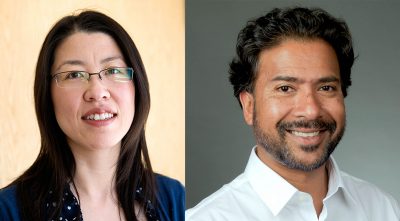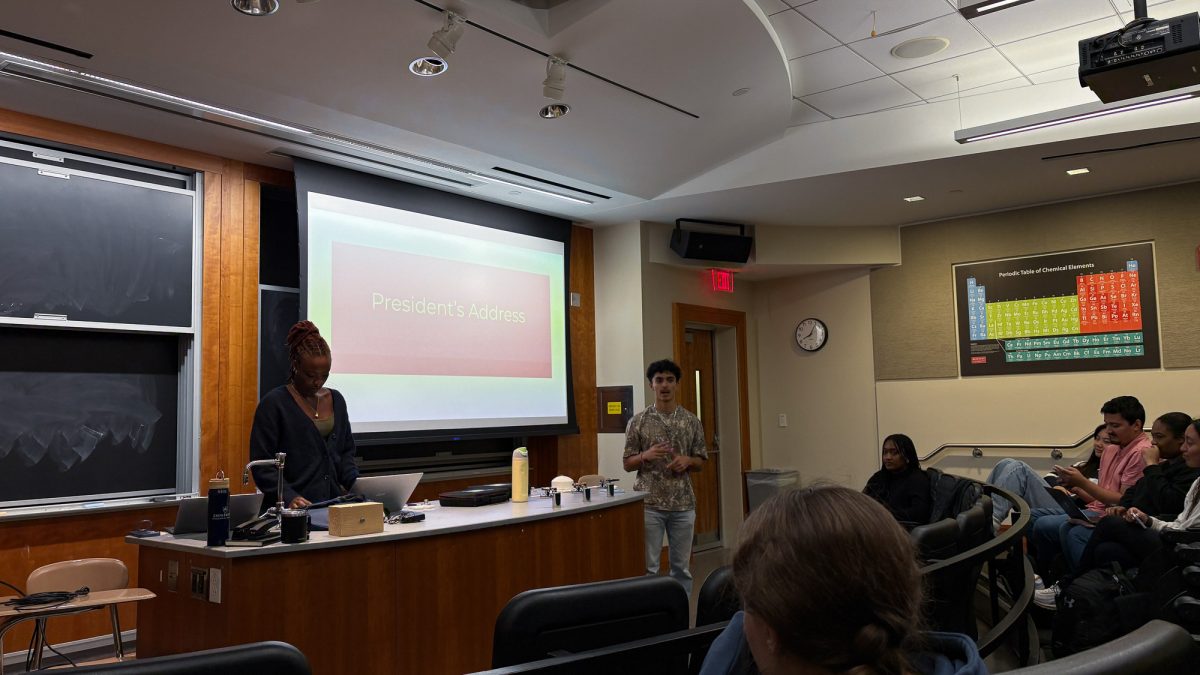
An award of almost $1 million from the National Science Foundation was recently granted to Boston University College of Engineering professors Kamal Sen and Xue Han to study the cocktail party effect and eventually map out circuits in the brain that contribute to it.
The cocktail party effect allows “normal hearing listeners” to focus on one conversation in an environment where others are speaking in the background, Sen said.
The initial proposal for this research project went through a “merit review process and was selected for funding based on an assessment of its intellectual merit and broader impacts,” said NSF Public Affairs Specialist Linda McBrearty.
Once the NSF announces a funding opportunity, organizations submit their proposals, after which at least three peer reviewers and a program officer look over them, according to the NSF website. Any recommendations from a program officer then go through a division director and a grants and agreements officer before a grant is awarded.
The grant starts on Oct. 1 and is estimated to end on Sept. 30 2021.
Following Sen’s published research on how sound affects the brain in songbirds, this new collaboration will apply those findings to mice. The songbirds research led Sen to identify the specific neurons in the auditory cortex “which might allow the brain to segregate sound sources.”
This sound segregation is related to the cocktail party effect, Sen said. This ability to disregard background noise is a difficult task for the hearing-impaired as well as for devices such as Amazon’s Echo.
“The reason we were interested in trying this in mice is because in the mouse, [there are] very powerful experimental tools,” Sen said, “for example, this really amazing tool called optogenetics where you can use light essentially to turn neurons in the brain on or off selectively using genetic techniques basically.”
Optogenetics, Sen said, “gives you selective control of different types of neurons in the brain,” which, along with other powerful tools, will help them pinpoint the circuits for the neurons that were previously identified in the songbirds research.
Sen and Han discovered that neurons in the brains of mice were similar to the neurons in the brains of songbirds, which allowed them to use the mouse model.
“So now we are trying to understand,” Sen said, “‘OK, there are these neurons in the brain, but how are they constructed? What are the circuits that lead to these very interesting responses?’ And [through] using optogenetics, we are going to be able to basically come up with … circuit diagrams of how these neurons are built.”
The research proposal projects a three-year plan for the research with different phases, Sen said, but the work will take years to develop.
In terms of real-world application of this research, Sen said, once the circuits are established and understood, it will allow for the circuit to be integrated into a system like a hearing aid or speech recognition device where the circuit will be able to separate sounds like a typical-hearing person is be able to do.
“So that’s the long-term goal,” Sen said, “and it’s pretty exciting that we go from understanding how circuits are built in the brain to eventually building circuits that do exactly that, so it’s biologically inspired.”
Sen said that he is excited that this new research is combining his previous research on songbirds, which is mainly computational modeling and theoretical work, with Han’s experimental work in optogenetics, as it is “a very interdisciplinary combination and it makes it much more powerful.”
“I’m excited about the collaborative aspect of it and the interdisciplinary aspect of it,” Sen said.
























































































































Gopa Sen • Sep 21, 2018 at 3:47 am
Congratulations Kamal. Keep shining.